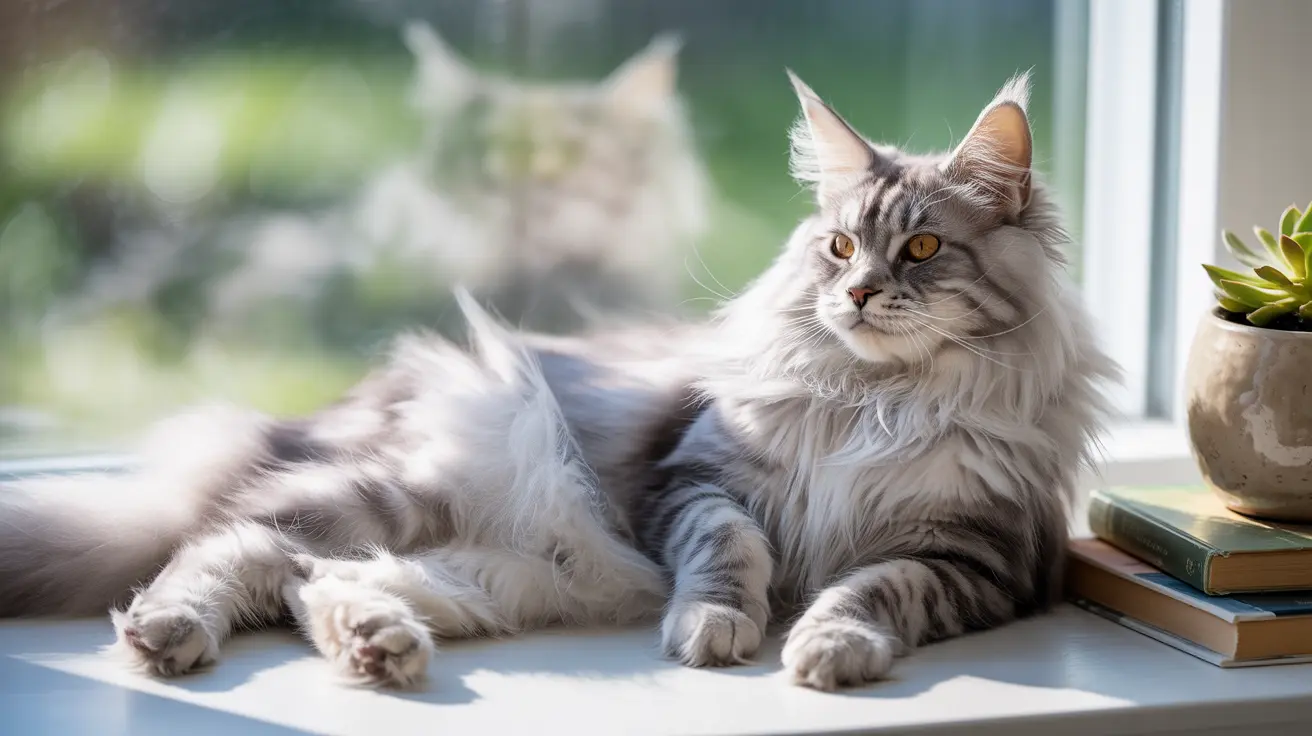Have you ever wondered why our feline friends tend to outlive their canine counterparts? The answer lies in a fascinating combination of genetics, physiology, and evolutionary history. Let's explore the scientific reasons behind why cats generally enjoy longer lifespans than dogs, and what this means for pet owners.
Modern research shows that while dogs typically live 10-13 years, cats often reach 13-17 years, with many surpassing the two-decade mark under optimal care. This significant difference isn't just coincidence – it's rooted in fundamental biological and lifestyle factors that give cats a natural longevity advantage.
The Size Factor: How Body Mass Affects Lifespan
One of the most significant factors contributing to cats' longer lifespans is their relatively consistent size across breeds. Unlike dogs, which can range from tiny Chihuahuas to massive Great Danes, most domestic cats maintain a similar body mass, typically between 8-10 pounds.
This size consistency has important implications for longevity. Larger animals, particularly dogs, tend to age faster at the cellular level and face more strain on their organs and skeletal structure. Giant dog breeds might only live 6-8 years, while smaller breeds can reach 15-18 years – closer to the typical cat lifespan.
Genetic Advantages and Evolution
Cats have experienced less intensive selective breeding throughout history compared to dogs. This has resulted in fewer genetic disorders and generally more robust health across the feline population. The cat genome has remained closer to its wild ancestors, preserving beneficial traits that contribute to longevity.
Research indicates that cats possess more complex immune systems and larger brain-to-body ratios than dogs, both factors associated with increased lifespan in mammals. These genetic advantages help cats fight disease more effectively and maintain better body function into old age.
Lifestyle and Environmental Factors
Indoor living significantly impacts cat longevity. While most dogs require outdoor exercise and face associated risks, indoor cats enjoy protected environments with fewer dangers. This controlled lifestyle reduces exposure to accidents, diseases, and environmental stressors.
Cats also demonstrate better self-regulation in diet and activity levels. They're naturally more inclined to moderate their food intake and maintain consistent exercise patterns, which helps prevent obesity – a major factor in reduced lifespan for both species.
The Impact of Modern Veterinary Care
Advanced veterinary medicine has increased lifespans for both cats and dogs, with life expectancy rising approximately 2.6 months per year since 2013. However, cats often respond better to medical interventions due to their more standardized size and fewer breed-specific health complications.
Regular preventive care, including vaccinations, dental care, and early disease screening, has particularly benefited cats, helping many reach their twenties in good health. The standardization of feline medical protocols, compared to the varied requirements for different dog breeds, also contributes to more consistent healthcare outcomes.
Frequently Asked Questions
Why do cats generally live longer than dogs on average?
Cats typically live longer due to their consistent size, stronger genetic makeup, more robust immune systems, and generally protected indoor lifestyle. Unlike dogs, they haven't undergone extensive selective breeding that can introduce health complications.
How does a cat's size impact its lifespan compared to different dog breeds?
Cats' uniform size across breeds contributes to more consistent lifespans, while dogs show dramatic variation. Larger dogs age faster and often live shorter lives than smaller dogs, with most cats falling into a size range similar to small-to-medium dog breeds that tend to live longer.
What role does selective breeding play in the lifespan differences between cats and dogs?
Selective breeding has created more genetic health issues in dogs than cats. While dogs have been bred for specific traits that can impact health and longevity, cats have maintained more of their natural genetic resilience.
How do lifestyle and indoor living affect the longevity of cats versus dogs?
Indoor cats typically live longer because they're protected from accidents, diseases, and environmental hazards. Dogs, which generally require outdoor activity, face more risks that can impact their lifespan.
Can advanced veterinary care help extend the lifespan of both cats and dogs equally?
While both species benefit from modern veterinary care, cats often show better outcomes due to their more standardized size and fewer breed-specific health issues. This makes medical treatment more straightforward and generally more successful for cats.
Conclusion
The longer average lifespan of cats compared to dogs results from a complex interplay of biological, genetic, and environmental factors. Understanding these differences helps pet owners provide optimal care for both species, potentially extending their companions' lives through appropriate lifestyle choices and preventive healthcare.






